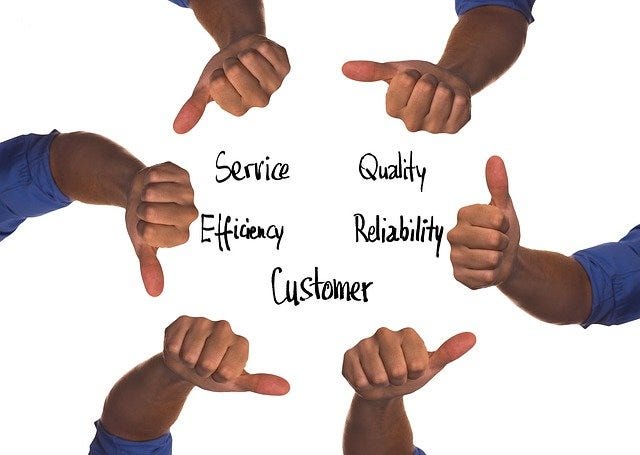Maximizing Quality: A Deep Dive into Effective Return Management
Written on
Chapter 1: Understanding Returns in Business
In the world of customer service, my journey began in handling RMA—Return Material Authorization and Warranty. One of the most detrimental experiences for a customer is when they need to initiate an RMA, indicating a problem with the product and dissatisfaction. This situation is particularly frustrating because customers expect to utilize their purchases, not return them.
To manage returns effectively, a company must have established systems, procedures, and personnel in place. When a product is returned, it not only deprives the customer of its use but also forces the supplying company to divert resources to repair or replace the item, disrupting their regular production workflow.
Failing to implement a formal return management process is a significant oversight for businesses, regardless of size. Through my experiences with various organizations, including my own, I have seen many companies lack a structured approach to handling returns, often viewing them as a necessary inconvenience that can be ignored or delayed.
As someone who has been responsible for returns and warranty management across several companies, I was tasked with creating effective systems to address returned products. Many organizations perceived the establishment of a dedicated returns department as an unwanted cost of doing business, yet it was a challenge that needed to be addressed.
When I gained control of my own company in the aerospace sector, I recognized that returned products represented a serious issue that needed immediate attention. High quality and timely deliveries were non-negotiable expectations in our industry.
Upon reviewing the situation, I identified three primary reasons for product returns:
- Shipment damage due to poor packaging or mishandling.
- Customer damage, often from improper installation or accidents.
- Deficiencies in our production processes leading to defects in the products.
Interestingly, the bulk of our returns stemmed from our internal shortcomings rather than external factors. This revelation marked the beginning of our proactive approach to tackling the returns dilemma.
We systematically analyzed the root causes of returns, educating our employees on the importance of quality and its direct impact on our operations. This led to a company-wide improvement initiative. We traced the production process from end to start, identifying the underlying issues without assigning blame, and focused on solutions to prevent recurrence.
Our commitment to reducing returns became a driving force for enhancing our quality standards, ultimately leading us toward a "Lean Manufacturing" philosophy. The results were remarkable; our RMA rates decreased significantly, much to the satisfaction of our customers who now enjoyed reliable products.
Do you consistently deliver high-quality, usable products?
Thank you for taking the time to read this article!
Section 1.1: The Importance of Quality Control
Implementing a strong quality control mechanism is crucial for any business that aims to minimize product returns.
Subsection 1.1.1: Image of Quality Control Practices

Section 1.2: A Systematic Approach to Returns
Creating an organized return management system can transform how businesses handle customer dissatisfaction.
Chapter 2: Learning from Returns
In the video titled "Do These Paints 'Spark Joy?' Reviewing ALL Kristy Rice Paintcrush Supplies!!!", the presenter evaluates various art supplies, shedding light on customer expectations and product quality.
The second video, "I bought TEMU Woodworking Tools: Legit or Rip-Off? Secret Buyers Guide," offers insights into the quality and usability of woodworking tools, emphasizing the importance of reliable products for customer satisfaction.